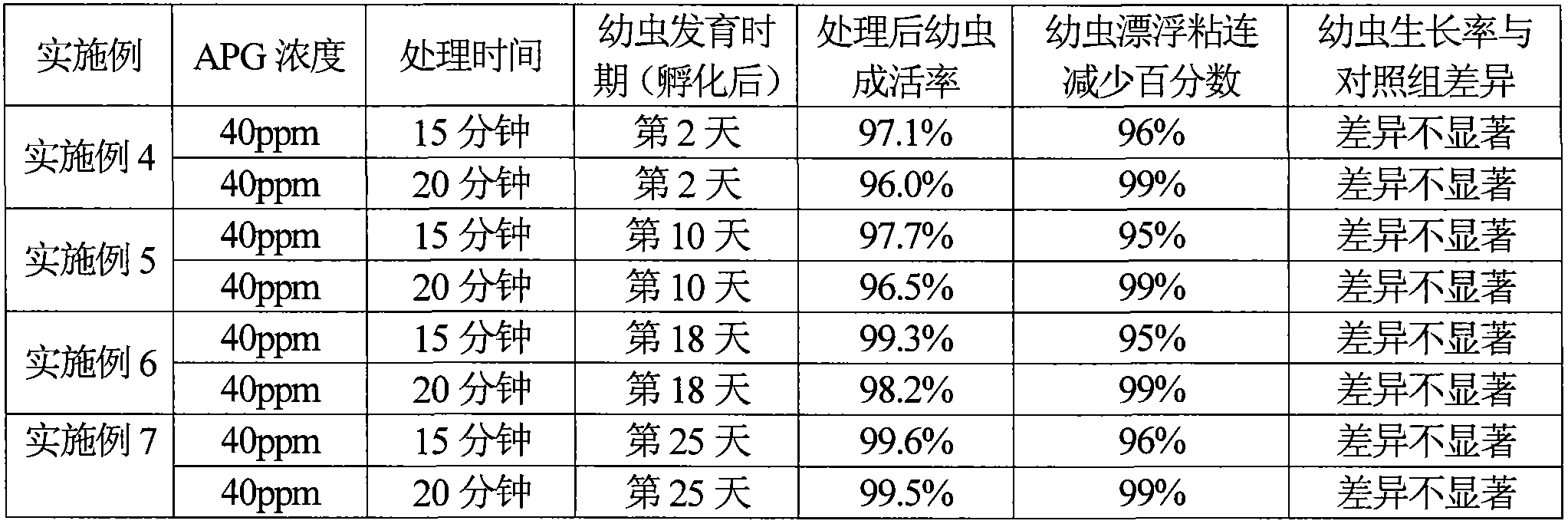Chemical method for preventing atrina pectinata larvas from floating adhesion
A chemical method, the technology of the larvae, applied in climate change adaptation, fish farming, application, etc., can solve the problems of larvae floating and sticking, achieve less damage to larvae, prevent larvae floating and sticking, and change the hydrophobicity
- Summary
- Abstract
- Description
- Claims
- Application Information
AI Technical Summary
Problems solved by technology
Method used
Image
Examples
Embodiment
[0024] In the invention, the non-toxic surfactant alkyl glycoside (APG) is used to treat the larvae for a period of time, so as to change the surface activity of the shell of the larvae and prevent the larvae from floating and sticking. The suitable conditions for cultivating the larvae of P. chinensis are: water temperature 18-28 ℃, salinity 25-35‰, pH value 7.0-8.5, larvae density 1-3 / ml. After 24 hours (at 25°C), fertilized eggs of A. kushii develop into D-type larvae, and after 48 hours (that is, D-type larvae continue to develop for another 24 hours), they can be treated with APG after the shell strength increases. When in use, mix the APG stock solution and seawater according to the ratio of 1-2:50000 (or the volume concentration of APG stock solution 20-40ppm), then put the enriched larvae into a 300-mesh sieve silk or a net cage, and wash with the solution for 15 After ~20 minutes, rinse with fresh sea water until the surfactant is washed away, put the larvae into the ...
PUM
| Property | Measurement | Unit |
|---|---|---|
| Volume concentration | aaaaa | aaaaa |
Abstract
Description
Claims
Application Information
 Login to View More
Login to View More - R&D Engineer
- R&D Manager
- IP Professional
- Industry Leading Data Capabilities
- Powerful AI technology
- Patent DNA Extraction
Browse by: Latest US Patents, China's latest patents, Technical Efficacy Thesaurus, Application Domain, Technology Topic, Popular Technical Reports.
© 2024 PatSnap. All rights reserved.Legal|Privacy policy|Modern Slavery Act Transparency Statement|Sitemap|About US| Contact US: help@patsnap.com










